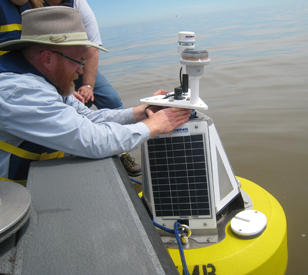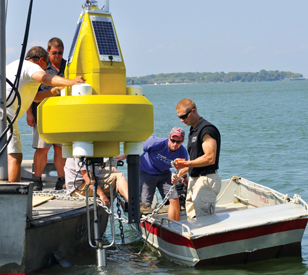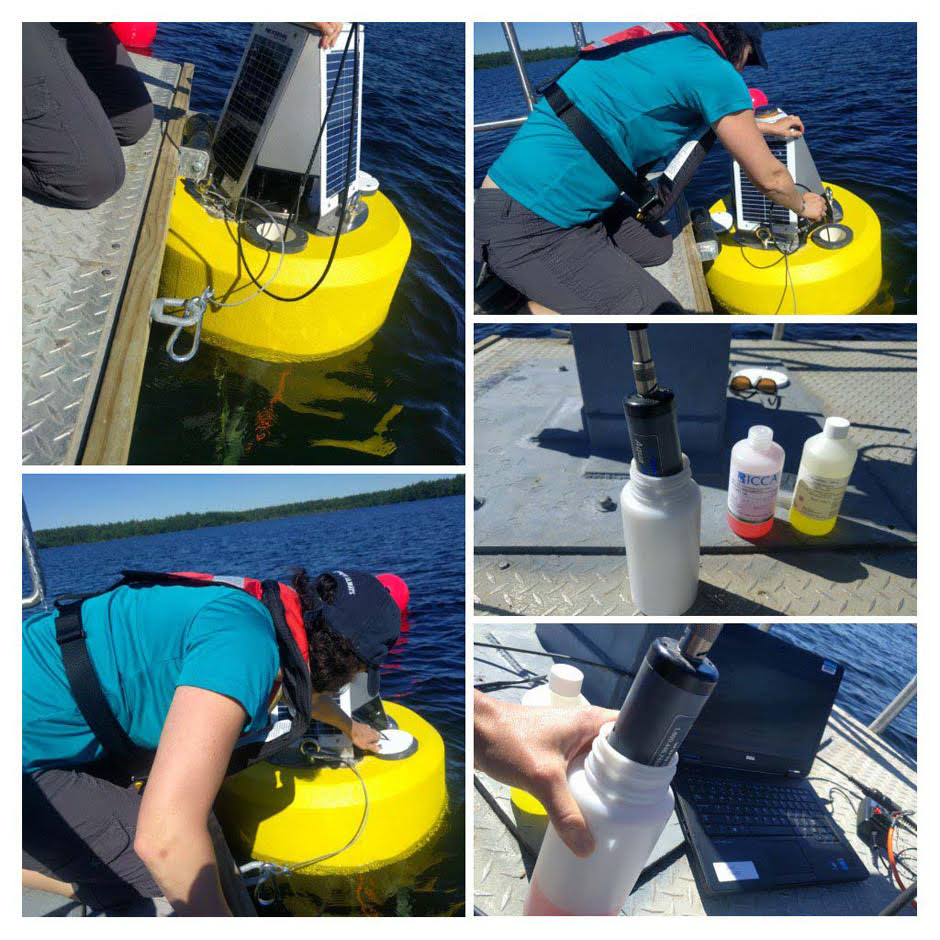HABs Detection System
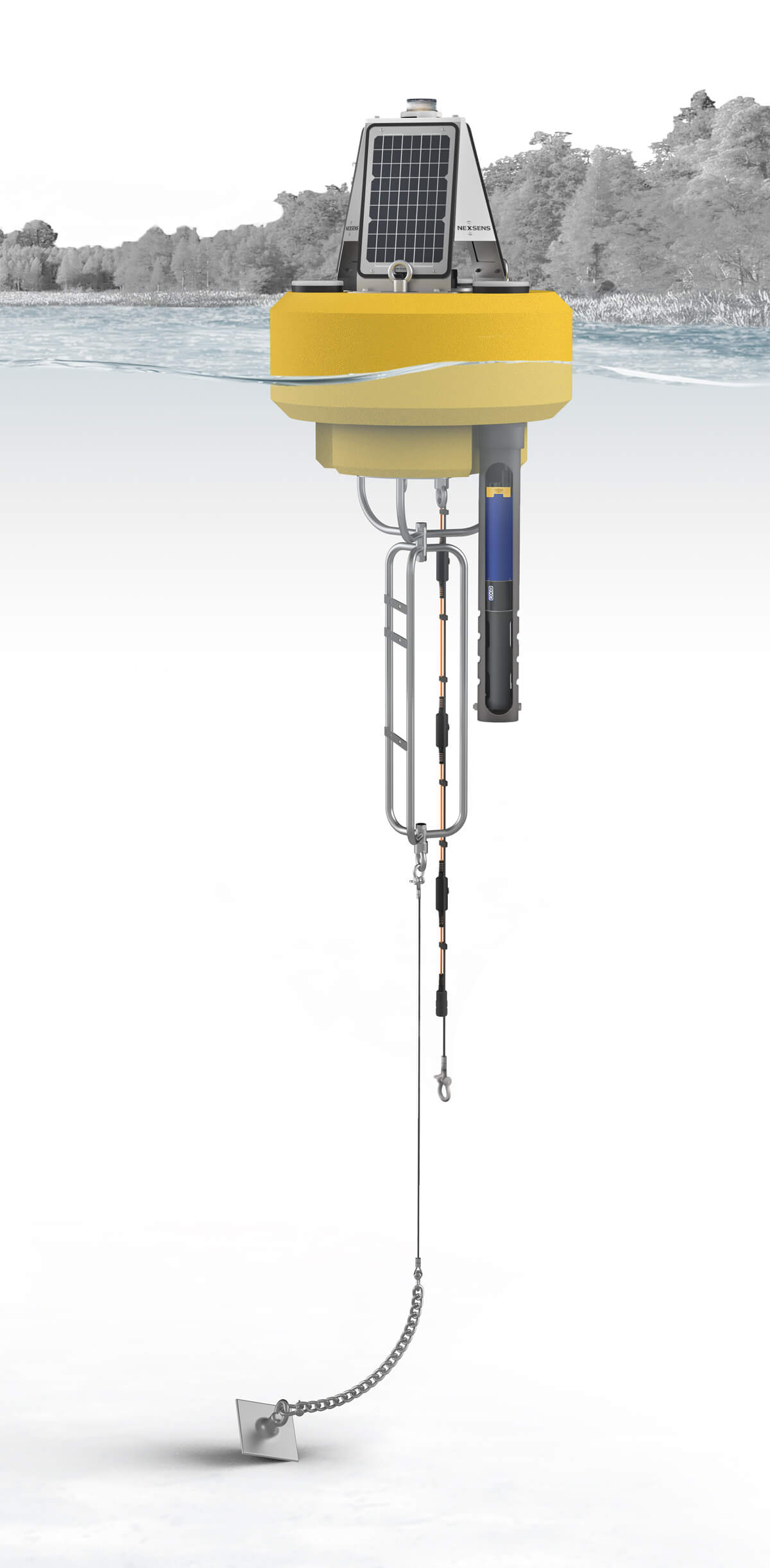
Harmful algal blooms (HABs) are an issue associated with eutrophication, or presence of excess nutrients in a body of water. Rapid growth of organisms like cyanobacteria under such conditions can deplete oxygen levels, increase stratification, and produce toxins that in severe cases can cause fish kills, disrupt drinking water supplies and harm humans and animals. Automated monitoring can help track HABs and predict when potentially hazardous conditions are forming.
HABs Detection
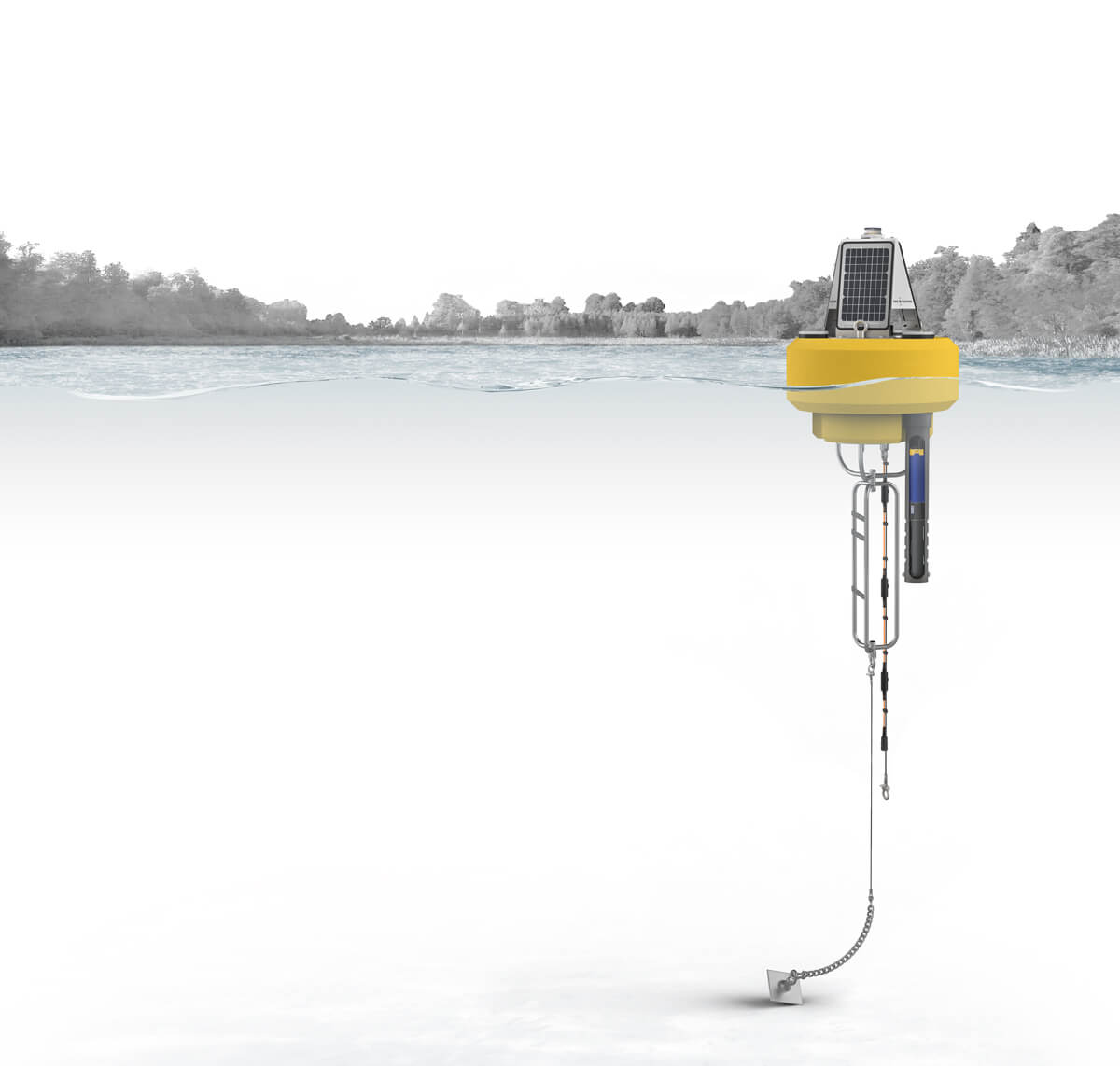
HABs Detection System
Since excess nutrients are a driving factor for the outbreak of harmful algal blooms, an effective HAB detection system should be able to accurately monitor relative nutrient loads. Other factors such as water temperature and oxygen levels can also help to predict when conditions are forming for an outbreak and to evaluate the effects and efficacy of mitigating measures.
NexSens HAB detection systems may include a wide range of sensors connected to a mast-mounted or buoy-mounted X3 environmental data logger. The X3 platform supports the TriOS NICO UV nitrate sensor for long-term monitoring of nitrate concentrations with minimal maintenance. Blue-green algae sensors like those from YSI, Turner Designs, Eureka and In- Situ can directly measure algae concentrations in both freshwater and saltwater and can be incorporated into multisensor sondes that can additionally be equipped with pH, dissolved oxygen, turbidity and other sensors.
When deployed from a floating platform such as the NexSens CB-450 data buoy, a system may also include a T-Node FR or TS210 temperature profiling string for measuring temperature gradients in the water column. Weather conditions like air temperature, solar radiation and precipitation can optionally be reported with a topside weather station. Light conditions below the surface can be monitored using underwater PAR (photosynthetically active radiation) sensors as well.
Regardless of system configuration, the X3 transmits data wirelessly in real-time via 4G LTE cellular or Iridium satellite communications to the WQData LIVE web datacenter for data viewing and management. In a basic configuration, this free service allows users to securely access and analyze data, as well as share data through auto-reports. Subscription-based tiers of WQData LIVE are also available for advanced reporting, alarming, and data sharing including automated export, API and public portal options.
Contact a NexSens Applications Engineer today to discuss your HABs detection application.

Case Studies
Maumee Bay Algae Monitoring
In order to protect the millions of people who rely on Lake Erie for drinking water from the threat of harmful algal blooms in its water, nearby universities and state agencies have coordinated monitoring efforts to better predict the presence of algal toxins. Their work has helped expand a network of data buoys in the great lake that keep an eye on water quality with an aim to avoid another drinking water crisis like the one that affected residents of the City of Toledo in August 2014.
Read MoreStone Lab Buoy Tracks Algae
Even before the Toledo Water Crisis, researchers at Stone Lab were concerned with the algae blooming in Lake Erie. With their location on the lake’s Gibraltar Island, it was easy for them to see the tides whipping up green stuff each day in the summer months. So long before the crisis, which took place in August 2014, scientists at the Ohio State University lab began working with engineers at NexSens Technology to devise a monitoring solution that would fit their needs. In addition, the platform would need to be versatile enough to meet the lab’s mission of education, research and outreach.
Read MoreSubmerged Sensors of Sebago Lake
Sebago Lake is the second largest lake in Maine—one of the only lakes in the nation with clean enough water for use by a drinking water facility without filtration requirements. Residents of the Greater Portland area are the beneficiaries, and they are invested in maintaining their lake’s health. A joint project between the Portland Water District (PWD) and Saint Joseph’s College of Maine (SJC) assisted by the NexSens team submerged around 145 pounds of new, high-tech equipment in Sebago Lake in 2018.
Read More





